FORMER PRIMARY SCHOOL NO.2828
60 GILLIES STREET MARYBOROUGH, CENTRAL GOLDFIELDS SHIRE
-
Add to tour
You must log in to do that.
-
Share
-
Shortlist place
You must log in to do that.
- Download report
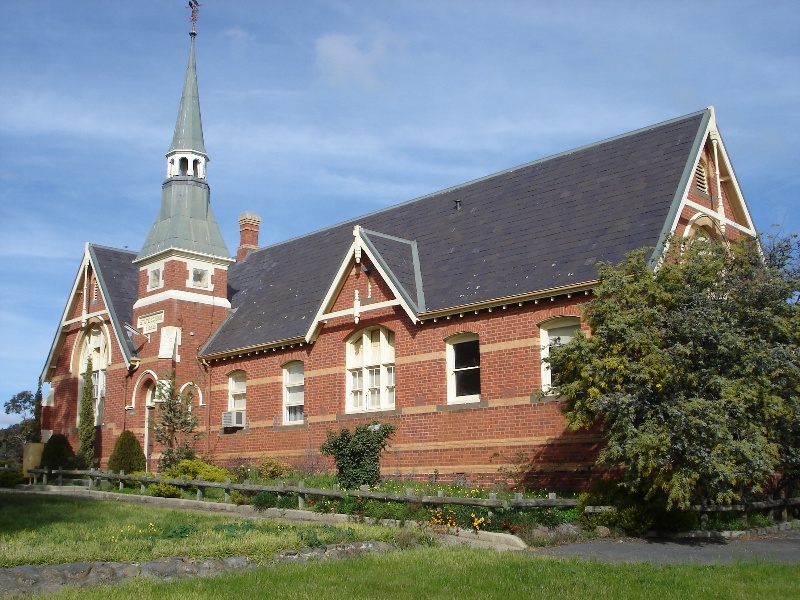

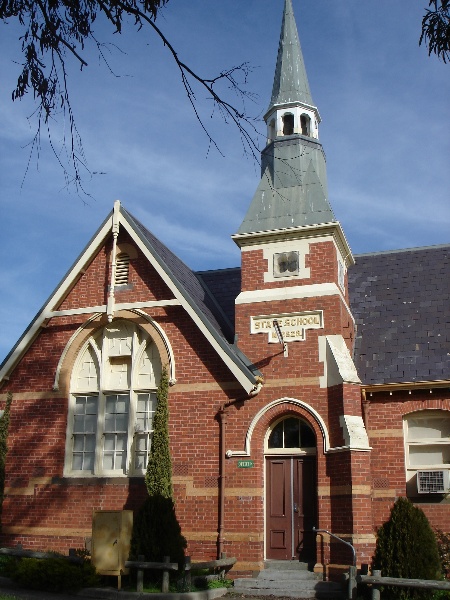
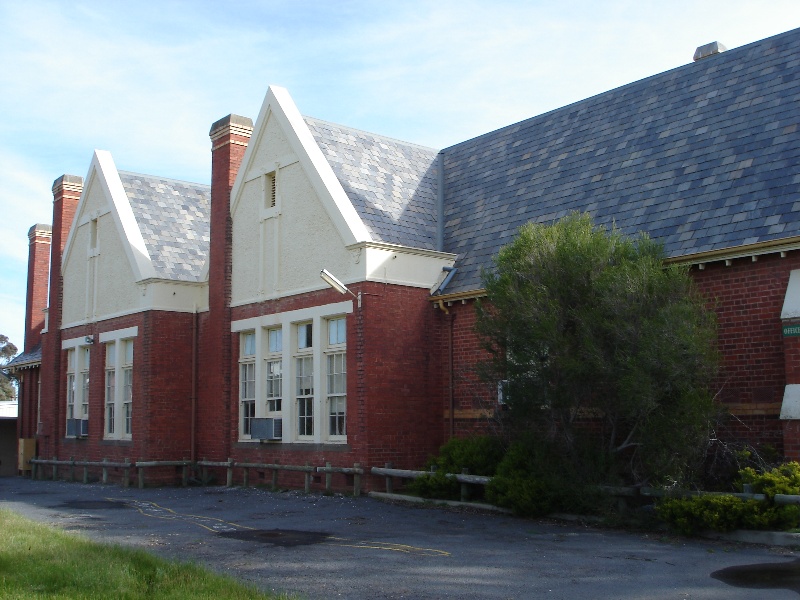
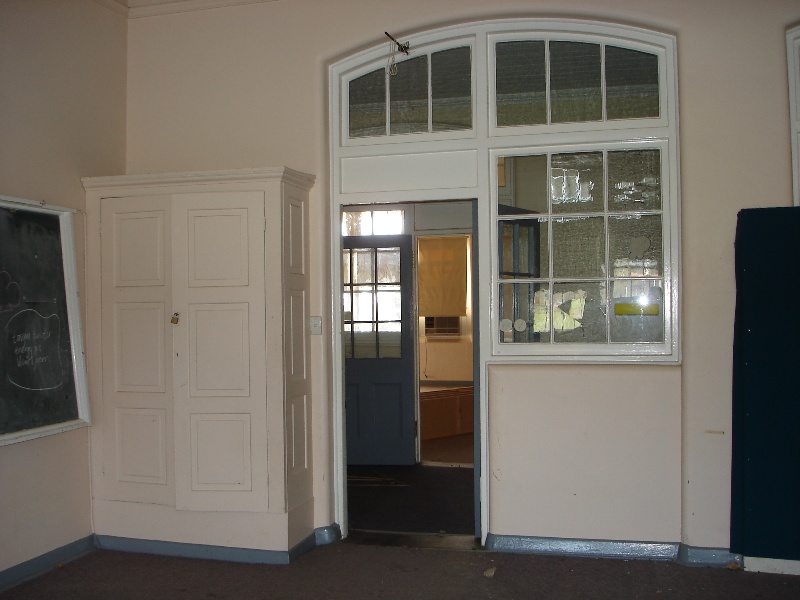
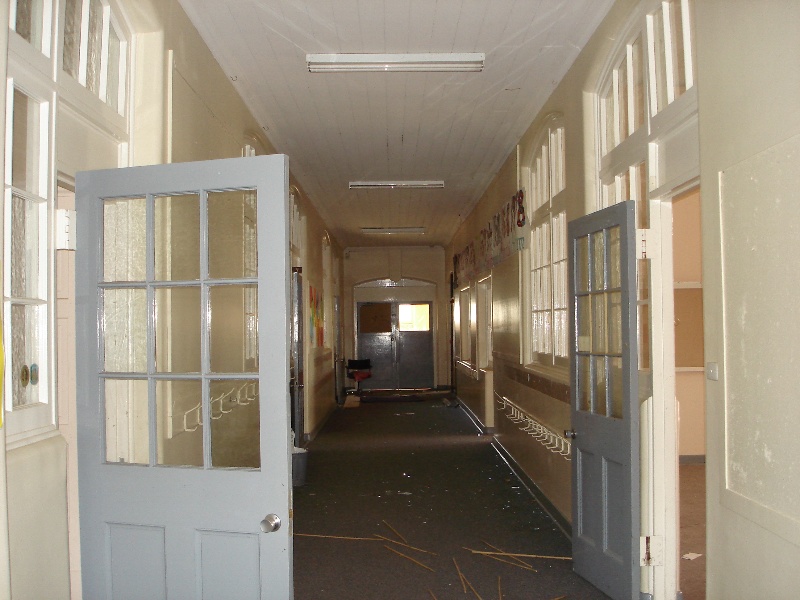
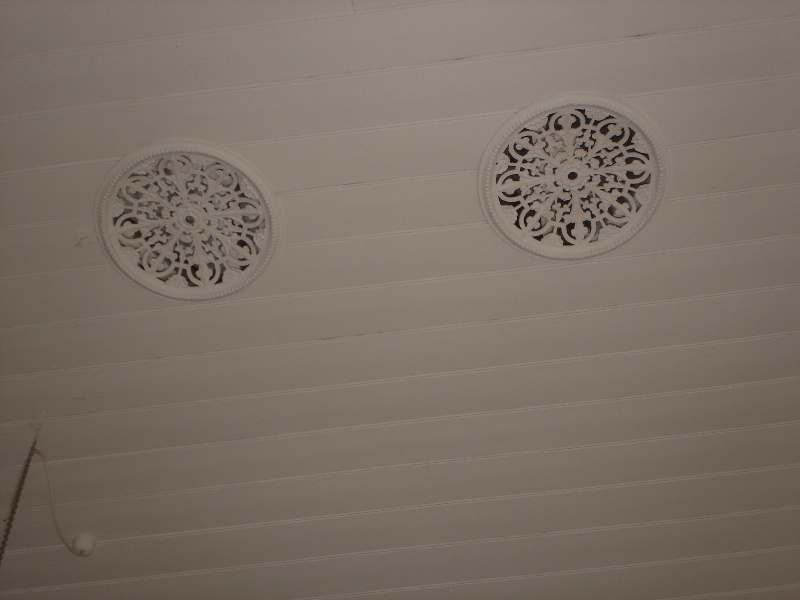

Statement of Significance
What is significant?
Maryborough East Primary School No 2828 was built in 1886-7 in response to the overcrowding at Maryborough School No 404. The new two roomed school was designed by the Education Department architect Henry Bastow, and opened in 1887. The design was based on one of the winners from the school design competition of 1873. In 1890 an extra classroom, as well as the top half of the tower, were built. In 1893 schools 404 and 2828 amalgamated, and classes three to six moved from 2828 to 404, while classes one and two remained at 2828. The overcrowding problems continued, and became a serious problem when infectious diseases such as scarlet fever, typhoid, diphtheria and measles appeared in the town. In 1909-1910 the school was doubled in size with three new classrooms, two cloak rooms and toilets added. At the beginning of 1911 school No 2828 was made a complete school rather than an adjunct school to 404. In the 1950s various buildings were added to the site to cope with the growing post-war population. The school was closed at the end of 2005.
Maryborough Primary School 2828 reflects the two main periods of its construction. The 1886-7 front section is an asymmetrically planned, Gothic style, red brick, single storey building with a slate roof. It has cream brick string courses and arched door and window openings, those in the projecting gables and in the tower being more elaborate, with hood moulds above. A square tower topped by an octagonal belfry is asymmetrically placed above the front entrance. The 1910 additions at the rear are of a similar red brick with rendered Arts and Crafts-inspired decorative detailing, with roughcast and vents within the gables, prominent brick chimneys, render trimmed parapets, and large straight-headed windows.
How is it significant?
Primary School No 2828 is of architectural and historical significance to the State of Victoria.
Why is it significant?
Primary School No 2828 is historically significant as a reflection of the economic boom in Victoria in the 1880s and of the growth of Maryborough to the east following the arrival of the railway in 1874.
Primary School No 2828 is architecturally significant as a fine and intact example of a Gothic primary school designed by the Education Department architect Henry Bastow, derived from one of the winning entries in the 1873 design competition, and extended in 1910 in an Arts and Crafts style.
-
-
FORMER PRIMARY SCHOOL NO.2828 - History
CONTEXTUAL HISTORY
Maryborough was founded in the 1850s, following the discovery of gold in the area. The town was surveyed in 1855 and land sales began in 1856. The original Commissioner's Camp Reserves became the nucleus of the future town, which became an important inland town in the nineteenth century, growing to serve the thousands of miners, at first the fossickers of alluvial gold and later the workers in the deep-lead mines.
Development of the town was stimulated by its being chosen in the 1850s as the site of the regional court house and gaol, and it grew rapidly from the 1860s, particularly after the railway reached the town in 1874. Its importance continued into the twentieth century and was a major factor in the town's survival after the mining boom came to an end when the gold ran out in about 1916. ('City of Maryborough Heritage Study', 1992, v 2)
Initially the nomadic nature of the population made the education of children on the goldfields extraordinarily difficult. The few tent schools begun on the goldfields by the National and Denominational Boards made totally inadequate provision at first for children's needs. As mining centres grew the boards multiplied their resources on the diggings and built new brick schools. To obtain teachers however during the first flush of gold fever proved an almost impossible task. The difficulties diminished as gold became less readily accessible and the population became more stable. (Vision and Realisation, v 2, p 604.)
The 1860s Land Acts resulted in increased development throughout regional Victoria, and the rate of establishment of schools also increased rapidly. In 1850 there was only one State aided school in the Central Highlands area of Victoria. Eight opened in 1853, forty four more by 1856, and more than twenty more a year for each of the next five years. By 1862, when the Board of Education was established, 195 schools had opened in the area; when the 1872 Education Act was passed there were 361. (Vision and Realisation, v 2, p 606.)
Following the 1872 Act, which made education free, compulsory and secular, the Department of Education assumed responsibility for the design and building of new schools. Larger schools were required, and most of these were Gothic in style and often linear, or a U-, or H-shape in plan. A design competition was held, which produced thirteen designs, for either 500 or 1000 pupils, all of which were built. One of the most influential was W H Elleker's design for a school for five hundred, first built at Buninyong in 1874. In some cases the Buninyong plan (as used for example at Maryborough No 404) was modified, as at Glenferrie No 1508 (1877, 1881, by H R Bastow). The asymmetry did not arise from the plan, but was imposed on it, to present a more fashionable facade. A master's office was sometimes introduced and singled out for distinctive treatment, in order to introduce irregularity.
The first schools built following the 1872 Education Act were symmetrical, though towers (as distinct from ridge turrets) were always placed off-centre, and small schools were consistently asymmetrical. After 1876 however asymmetrical and symmetrical designs assume equal importance for larger schools.
HISTORY OF PLACE
Following the arrival of the railway in 1874, Maryborough grew rapidly. The railway station was built on the east side of the town, leading to an expanded population in this area. By 1885 State School 404 was becoming so overcrowded that the need for a new school was urgent, and the Town Clerk sent a petition to the Education urging the establishment of a school at Maryborough East. In 1886 land was purchased from William Archer for ₤50. The school was designed by the Education Department architect Henry Bastow, and a contract was let in October 1886 for a brick building of three rooms to accommodate 150 pupils at a cost of ₤1200. The foundation stone was laid on 11 December 1886 by Charles Pearson, the Minister for Education, and the school was completed in June 1887 and opened shortly after. It was built as a mirror image to the building shown in the 1886 plan.
In 1887 the Town Clerk requested that the tower be completed, as 'The school has such a commanding view and will be seen from any point around Maryborough it being erected upon such a prominent site that unless the tower is completed the school will be divested of a great deal of architectural beauty'. The Education department stipulated however that the tower could only be completed if half the cost was born locally. The tower and an extra classroom were added in 1889-90.
As early as 1888 the school became overcrowded, with 190 pupils enrolled in a school designed for 150. In 1890 an extra classroom, as well as the top half of the tower, were built. In 1893 schools 404 and 2828 amalgamated: classes three to six at 2828 moved to 404, while classes one and two remained at 2828. But the overcrowding problem continued, with twenty one pupils being taught in a lavatory at 2828 in 1901, and in 1902 thirty-one pupils in a lobby six feet square; forty children had to be transferred to No 404. This became an even more serious problem when infectious diseases such as scarlet fever, typhoid, diphtheria and measles appeared in the town. In 1902 the Age reported on the overcrowding at the school, leading the health officer to report on it to the Borough Council, and the Public Health Department also became involved.
In 1909-1910 the school was doubled in size, with three new classrooms, two cloak rooms and toilets added. The additions were in face brick of a similar colour to the original building, but were in an Arts and Craft-inspired style, quite different from the original, with roughcast in the gables and Art Nouveau decorative detailing. At the beginning of 1911 school No 2828 was made a complete school rather than an adjunct school to 404.
In the 1950s the former Percydale School building (since removed), two new classrooms, and a staffroom were added to cope with the growing post-war population. By 1964 another classroom, store-room and Infant Mistress's office were built, and two more rooms in 1970.
The school was closed in 2005.
The school has a number of notable ex-pupils, including Sir Thomas Dunhill, Royal Surgeon to the late King VI; E J Rogan, Commissioner of Victorian Railways; his brother Frank, Town Clerk of Melbourne; C Stoneham, MP and former leader of her Majesty's Opposition in the State Parliament; J Pascoe, Manager of Ansett-ANA; and H C Schmidt, General manager of Elder Smith-Goldsborough Mort Ltd.
References:
Betty Osborn & Trenear DuBourg, Maryborough A Social history 1854-1904, Maryborough 1985;
Vision and Realisation, Melbourne 1973, vol 2, pp 829-30.
FORMER PRIMARY SCHOOL NO.2828 - Plaque Citation
This school opened in 1887 in a two-room Gothic style building designed by the Public Works Department architect Henry Bastow and in 1909-10 was extended to the rear in an Arts and Crafts style.
FORMER PRIMARY SCHOOL NO.2828 - Permit Exemptions
General Exemptions:General exemptions apply to all places and objects included in the Victorian Heritage Register (VHR). General exemptions have been designed to allow everyday activities, maintenance and changes to your property, which don’t harm its cultural heritage significance, to proceed without the need to obtain approvals under the Heritage Act 2017.Places of worship: In some circumstances, you can alter a place of worship to accommodate religious practices without a permit, but you must notify the Executive Director of Heritage Victoria before you start the works or activities at least 20 business days before the works or activities are to commence.Subdivision/consolidation: Permit exemptions exist for some subdivisions and consolidations. If the subdivision or consolidation is in accordance with a planning permit granted under Part 4 of the Planning and Environment Act 1987 and the application for the planning permit was referred to the Executive Director of Heritage Victoria as a determining referral authority, a permit is not required.Specific exemptions may also apply to your registered place or object. If applicable, these are listed below. Specific exemptions are tailored to the conservation and management needs of an individual registered place or object and set out works and activities that are exempt from the requirements of a permit. Specific exemptions prevail if they conflict with general exemptions. Find out more about heritage permit exemptions here.Specific Exemptions:The purpose of the permit exemptions is to allow works that do not impact on the heritage significance of the place to occur without the need for a permit. Works other than those mentioned in the permit exemptions may be possible but will require either the written approval of the Executive Director or permit approval.
General Conditions:
1. All alterations are to be planned and carried out in a manner which prevents damage to the fabric of the registered place.
2. Should it become apparent during further inspection or the carrying out of alterations that originally or previously hidden or inaccessible details of the place are revealed which relate to the significance of the place, then the exemption covering such alteration shall cease and the Executive Director shall be notified as soon as possible.
3. If there is a conservation policy and plan approved by the Executive Director, all works will be in accordance with it.
4. Nothing in this declaration prevents the Executive Director from amending or rescinding all or any of the permit exemptions.
5. Nothing in this declaration exempts owners or their agents from the responsibility to seek relevant planning or building permits from the responsible authority where applicable.
Exterior:
. Minor repairs and maintenance.
. Removal of extraneous items such as air conditioners, pipe work, ducting, wiring, antennae, aerials etc, and making good.
. Installation or removal of external fixtures and fittings such as, hot water services and taps.
. Installation and repairing of damp proofing by either injection method or grouted pocket method.
Interior:
. Painting of previously painted walls and ceilings provided that preparation or painting does not remove evidence of any original paint or other decorative scheme.
. Removal of paint from originally unpainted or oiled joinery, doors, architraves, skirtings and decorative strapping.
. Installation, removal or replacement of carpets and/or flexible floor coverings.
. Installation, removal or replacement of curtain tracks, rods, blinds and other window dressings.
. Installation, removal or replacement of hooks, nails and other devices for the hanging of mirrors, paintings and other wall mounted artworks.
. Removal of tiling or concrete slabs in wet areas provided there is no damage to or alteration of original structure or fabric.
. Installation, removal or replacement of ducted, hydronic or concealed radiant type heating provided that the installation does not damage existing skirtings and architraves and provided that the location of the heating unit is concealed from view.
. Installation, removal or replacement of electrical wiring provided that all new wiring is fully concealed.
. Installation, removal or replacement of bulk insulation in the roof space.
. Installation, removal or replacement of electric clocks, public address systems, detectors, alarms, emergency lights, exit signs, luminaires and the like on plaster surfaces.
. Installation of stud walls which are removable.
. Demolition or removal of non-original stud/partition walls, suspended ceilings or non-original wall linings (including plasterboard, laminate and Masonite), bathroom partitions and tiling, sanitary fixtures and fittings, kitchen wall tiling and equipment, lights, built-in cupboards, cubicle partitions, computer and office fitout and the like.
. Removal or replacement of non-original door and window furniture including, hinges, locks, knobsets and sash lifts.
. Installation of plant within the roof space.
. Installation of new fire hydrant services including sprinklers, fire doors and elements affixed to plaster surfaces.
FORMER PRIMARY SCHOOL NO.2828 - Permit Exemption Policy
The purpose of the Permit Policy is to assist when considering or making decisions regarding works to the place. It is recommended that any proposed works be discussed with an officer of Heritage Victoria prior to them being undertaken or a permit is applied for. Discussing any proposed works will assist in answering any questions the owner may have and aid any decisions regarding works to the place. It is recommended that a Conservation Management Plan is undertaken to assist with the future management of the cultural significance of the place.
The significance of the place lies in its intactness as a late nineteenth century Gothic school building with early twentieth century additions. All of the registered building is integral to the significance of the place and any alterations that impact on its significance are subject to permit application.
The extent of registration protects the whole site and in particular all of the main building. All original elements of the building should be retained, including the external form and internally the original rooms.
Additional buildings: Further building on the site should be subject to permits. There may be scope to introduce new structures on the site, but these should be located in such a way that they do not impact on the significance of the old school building.
-
-
-
-
-
MARYBOROUGH RAILWAY STATION
 Victorian Heritage Register H1577
Victorian Heritage Register H1577 -
FORMER MARYBOROUGH TECHNICAL SCHOOL NO. 7225
 Victorian Heritage Register H2142
Victorian Heritage Register H2142 -
Railway Station
 National Trust H1577
National Trust H1577
-
'Lawn House' (Former)
 Hobsons Bay City
Hobsons Bay City -
1 Fairchild Street
 Yarra City
Yarra City -
10 Richardson Street
 Yarra City
Yarra City
-
-












